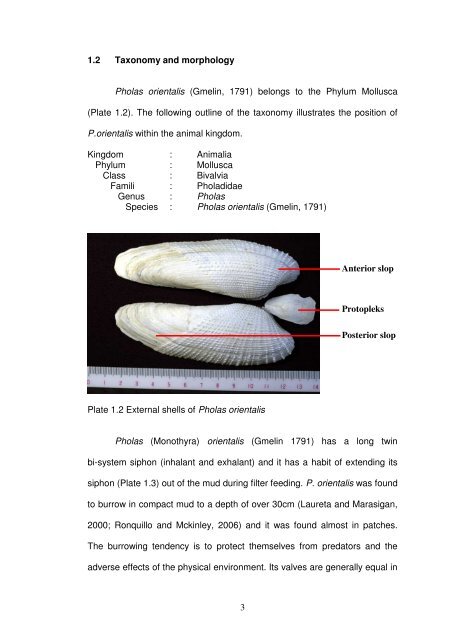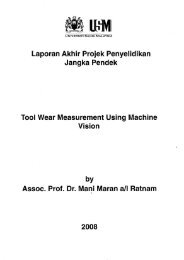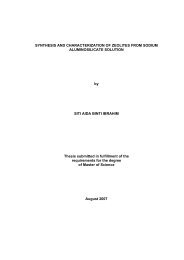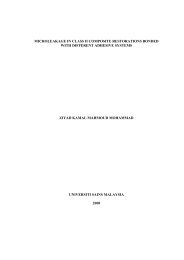biological aspects and the development of larvae ... - ePrints@USM
biological aspects and the development of larvae ... - ePrints@USM
biological aspects and the development of larvae ... - ePrints@USM
Create successful ePaper yourself
Turn your PDF publications into a flip-book with our unique Google optimized e-Paper software.
1.2 Taxonomy <strong>and</strong> morphology<br />
Pholas orientalis (Gmelin, 1791) belongs to <strong>the</strong> Phylum Mollusca<br />
(Plate 1.2). The following outline <strong>of</strong> <strong>the</strong> taxonomy illustrates <strong>the</strong> position <strong>of</strong><br />
P.orientalis within <strong>the</strong> animal kingdom.<br />
Kingdom : Animalia<br />
Phylum : Mollusca<br />
Class : Bivalvia<br />
Famili : Pholadidae<br />
Genus : Pholas<br />
Species : Pholas orientalis (Gmelin, 1791)<br />
Anterior slop<br />
Protopleks<br />
Posterior slop<br />
Plate 1.2 External shells <strong>of</strong> Pholas orientalis<br />
Pholas (Monothyra) orientalis (Gmelin 1791) has a long twin<br />
bi-system siphon (inhalant <strong>and</strong> exhalant) <strong>and</strong> it has a habit <strong>of</strong> extending its<br />
siphon (Plate 1.3) out <strong>of</strong> <strong>the</strong> mud during filter feeding. P. orientalis was found<br />
to burrow in compact mud to a depth <strong>of</strong> over 30cm (Laureta <strong>and</strong> Marasigan,<br />
2000; Ronquillo <strong>and</strong> Mckinley, 2006) <strong>and</strong> it was found almost in patches.<br />
The burrowing tendency is to protect <strong>the</strong>mselves from predators <strong>and</strong> <strong>the</strong><br />
adverse effects <strong>of</strong> <strong>the</strong> physical environment. Its valves are generally equal in<br />
3
















